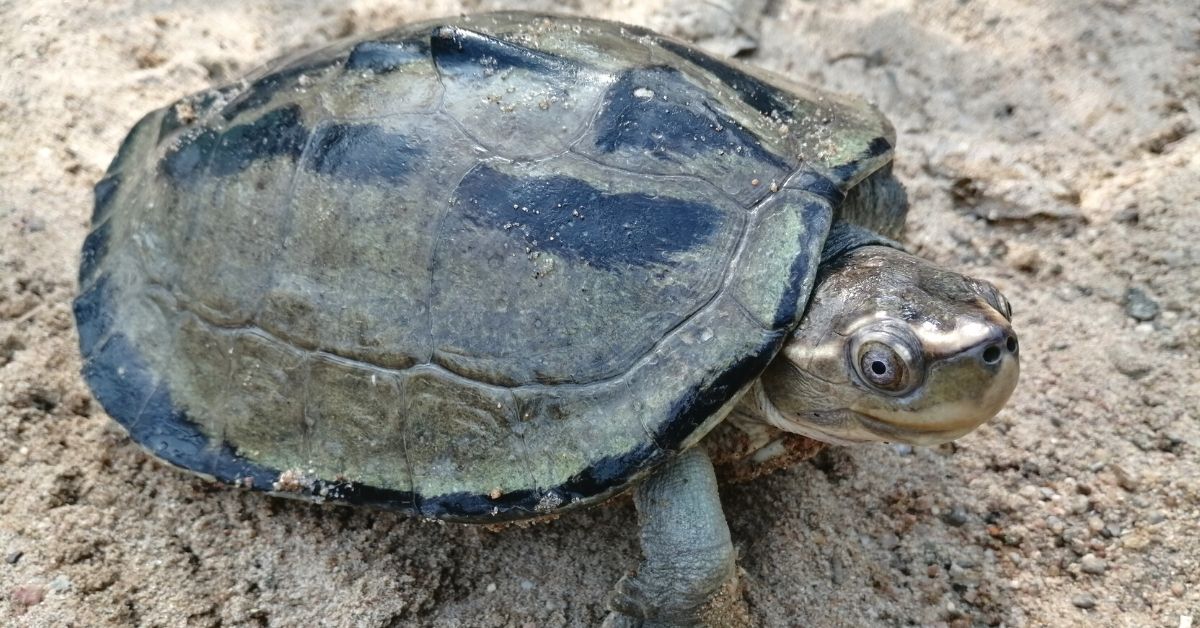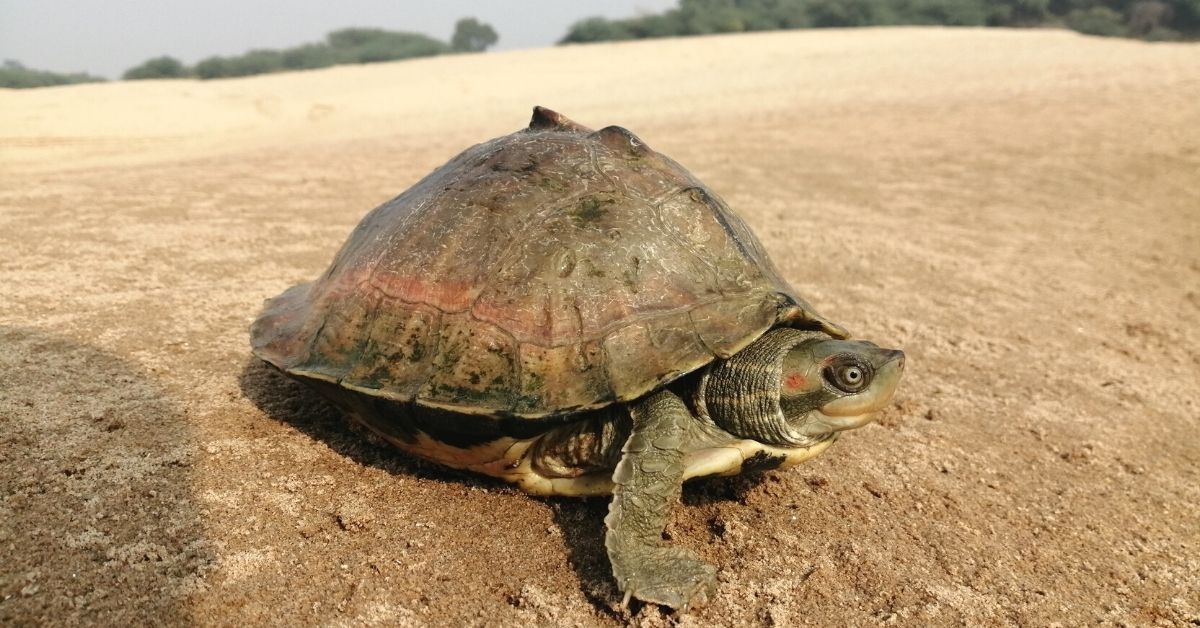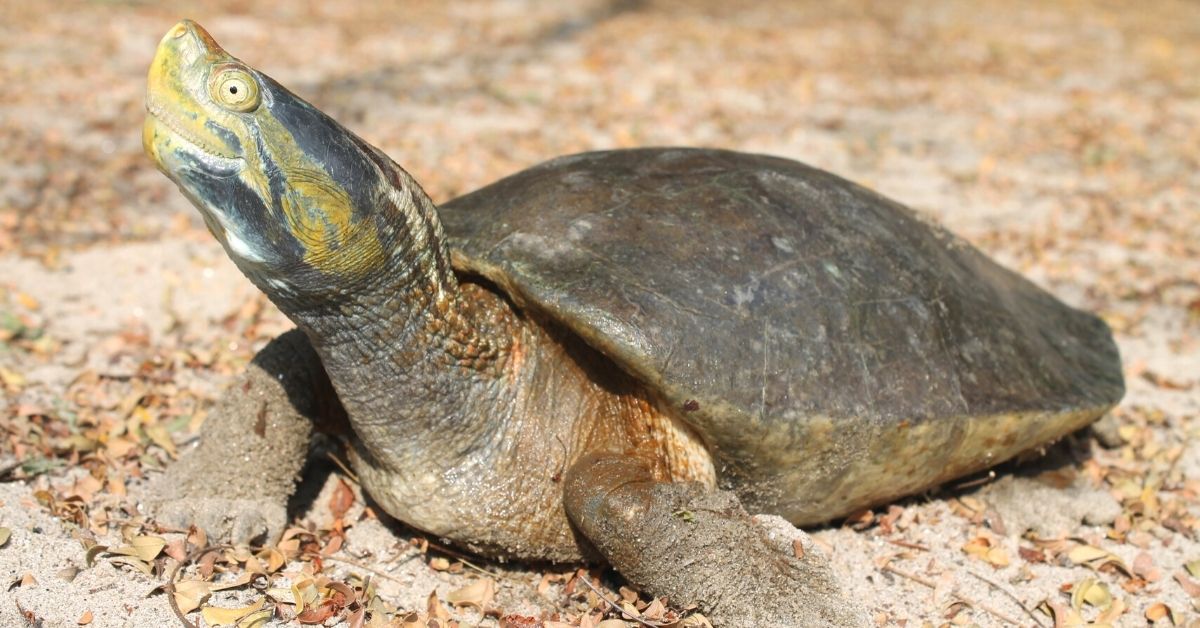Freshwater turtles are crucial for keeping the water ecosystems healthy as they clean the rivers and ponds by consuming dead matter and algae. The charismatic species also control invasive fish varieties and often serve as a source of protein for other animals in the water body.
There are 29 species of freshwater turtles in India, out of which 17 species are threatened due to the high demand in the international market, illegal trafficking, trading and loss of habitat, says Shailendra Singh, a wildlife conservationist.
“Many of these species are moving towards the brink of extinction and pose a threat to the environmental balance,” he tells The Better India. “The species in great danger are Batagur baska, Batagur kachuga, Nilssonia nigricans, Chitra indica, Pangshura sylhetensis and Manouria emys pharie,” he adds.
However, in a fight to prevent the same, Shailendra has dedicated his life and spent the last 13 years successfully bringing seven species back from the brink of extinction.
A Profound Love For Turtles

“I think my conservation actions benefited all three endangered species of Batagurs, Black Soft-shell Turtle, Indian Narrow-headed Soft-shell Turtle, Assam Roofed Turtle as well as Asian Brown Tortoises,” he asserts.
Shailendra adds that besides reviving the population, he is active in rehabilitating most northern species often rescued from illegal trade.
He says that his journey with turtle conservation began when he was nine years old. “I belong to a tiny village called Jarwal Road, near the Katarniaghat Wildlife Sanctuary which is located along the Indo-Nepal border. The sanctuary became my go-to place during my school days, and I was fascinated with the wildlife and biodiversity in the forest area. One day I sourced two Indian Tent turtles from a pet shop. I really liked to observe them, which eventually developed my interest in the creatures,” he explains.
Shailendra says that his curiosity only increased over time. “On one occasion I cut our newly bought mosquito net to fish turtles from nearby water bodies just to observe them.”
Later, he graduated in biology and did his post-graduation in environmental science from the University of Lucknow. “I joined Turtle Survival Alliance (TSA) while pursuing higher studies. The NGO was working towards protecting the species and learned that turtles were the most endangered vertebrates. Unlike the tigers and elephants, the turtles are a neglected group of animals,” he says.
In 2003, his research on turtles in the Gomati river revealed the local extinction of Three-striped Roofed Turtles and uncontrolled poaching of other riverine species. “The information concerned me, and I decided to study turtles across the nation to understand their threats and take necessary conservation measures,” he says, adding, “I find turtles beautiful, cute and harmless creatures. Anyone can easily connect with them. The fascinating thing about turtles is that they can control their brood and decide on quantity versus quality of neonates.”
He adds that the lack of awareness regarding protection and conservation further made him pursue his PhD for the cause. In 2005, he turned down a Border Security Force (BSF) job to study turtles in the River Chambal. “The decision upset my parents,” he says.
Shailendra says that not many people were aware of the issues concerning turtles, which is true even today. “This was also the reason I decided to dive into the cause and began working in the Gangetic and Brahmaputra river basins,” he explains.

Shailendra says that studying turtles in various parts of the country made him realise the number of challenges the creatures face for survival. “The turtles are poached for pet trade, meat and their shells in South-Asian countries. They often face survival threats due to water pollution or accidental drowning after getting stuck in fishing nets. Habitat change due to sand mining, loss of riverbed or agriculture across river banks pose other survival threats,” he explains.
Shailendra says that to counter the threats, he started conservation projects.
Citing an example of his work in the Chambal river, he says, “We initiated vulnerable nest protection programmes for Batagur kachuga and Batagur dhongoka in 2006. It was one of the longest-running campaigns where we protected nests from predators and other anthropogenic pressures. We set up a ‘rear and release’ facility near Etawah and provided help to a similar government facility in Madhya Pradesh for raising babies so that they are less vulnerable to predation.”
Describing his approach, Shailendra says that vital nesting sites of turtles are identified, and protection measures are taken accordingly. “Many eggs are guarded, hatched and released in safe waters. Our radio-telemetry study yielded information on conservation requirements, survival and dispersal of reared and released animals, which had an 80 per cent survival rate,” he adds.
He says that the local communities play a crucial part in assisting the same. “We set up a community education programme through cluster level approach along lower Chambal by involving 35 schools and over 4,000 riparian children. The local community is also involved in taking sustainable conservation measures by creating economic models through artificial jewellery-making, sewing schools, to reduce the pressure and dependence from earning their livelihood from key turtle populations and habitats.”
Shailendra says that from 13 Batagur Baskas in 2008, the population has grown to 380 today.
In 2021, he won the Behler Turtle Conservation Award for being the last hope for wildlife survival.
Protecting a Prehistoric Species

He says that various human connections are used in conservation programmes. “Turtles have been associated with religion, longevity and good omen. Communities in some parts of India believe in keeping turtles at home as a good omen. We are using our network to help breed the endangered species in villages and temple ponds. It is a challenge to convince people not to keep turtles at home,” he admits.
“The biggest issue is illegal turtle trade and controlling the poaching of turtles from the remnant populations besides properly rehabilitating the rescued animals from prohibited trade,” he says.
Now working as a program director at TSA, Shailendra says that he and his volunteers involve poachers in conservation projects to cut down on illegal incidents. He says, “It is ironic that despite such positive connections with humans, the turtles are on the brink of extinction.”
Shailendra says he aims to secure at least one functional population of all threatened Indian turtle species and develop a colony to ensure the future of turtles.
His one appeal to society is: “Never keep turtles as a pet or consume them as meat. I urge people to keep nearby wetlands and rivers clean to provide safe habitats for turtles. Locals should report any turtle sightings and illegal activities using the Kurma mobile application. Please support organisations saving turtles and wetlands in their respective areas.”
He adds, “Indian Turtles need our support, and I am lucky to contribute towards their conservation. I want to see lots of happy turtles in clean waters. I encourage youths and all citizens to join hands for conservation of this prehistoric creature that has walked this earth for over 200 million years.”
Edited by Yoshita Rao
No comments:
Post a Comment